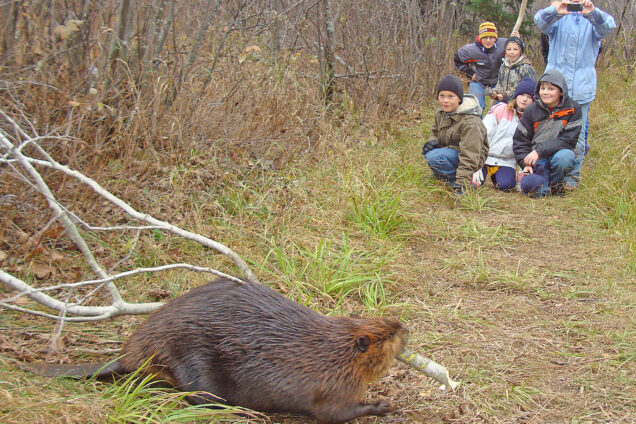Class Details
3 Hours
4th Grade to Adult
hard

How do beavers influence Sawmill Creek?
Students will participate in a beaver dress-up activity that illustrates the physical adaptations of the beaver. A hike along Sawmill Creek offers an excellent opportunity to observe the effects of beaver activity on the environment. Students may encounter dams, lodges, cut trees, canals, drags, or food caches. A skit of fur trade era characters offers insight into human and beaver interaction in the past. Discussion will help students understand the beaver’s role in the present.
Concepts
- All living and non-living components of an environment interact with one another to form an ecosystem.
- Beavers possess certain physical and behavioral adaptations to be successful in and change their environment.
- The natural environment has many obvious and subtle impacts upon human history and culture.
Outcomes
- Define physical and behavioral adaptations.
- Identify physical and behavioral adaptations that allow beavers to survive and utilize their environment.
- Recognize and interpret the evidence of beavers’ signs such as dams, lodges, canals, food caches, etc.
- Trace the history of the fur trade era and describe how beavers and humans interact in modern times.
- Evaluate how the beaver influences the ecology of both forest and aquatic ecosystems.
![]()

